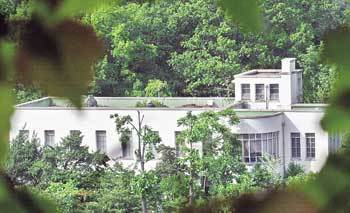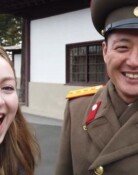Best Collection at Kansong Art Museum

Kansong Art Museum is located on the right side of the road towards Seongbuk-dong coming from Seongbuk-gu Samsun Bridge, Seoul. It was established in 1983 to preserve all the cultural assets collected by Kansong Jeon Hyeong-Pil (1906 – 1962) during the Japanese colonial time.
The name of the museum at the time of establishment was Bohwagak. As Kansong passed away in 1962, his third son Young-Woo inherited Bohwagak, and in 1966, former president of National Museum of Korea, Choi Sun-Woo, introduced scholar Choi Wan-Su, who then worked with Young-Woo to build Korea National Institute of Arts and change the name of Bohwagak to Kansong Art Museum. Choi worked as the research director, and he has been responsible for maintenance and research since then.
Kansong Museum has the best collection among all the Korean private museums. National Treasure (NT) No.72 Kyemikyung Keumdong-Samjonbul, NT No.73 Keumdong-Samjonbulgam, NT No.68 Cheongja-Sangam cloud-crane shaped, NT No.74 Cheongja duck-shaped, NT No.70 Hunminjeongum, NT No.71 Dongkuk-Jeongwoon, NT No.135 Hyewonjeonshinchup, Kyemjae Jeong Sun’s Mt. Keumkang landscape, Chusa Kim Jeong-Hee’s handwriting, Danwon Kim Hong-Do’s genre painting, etc.
Although it is known that Kansong Museum possesses approximately 5,000 – 6,000 items, the exact number is not known. The museum authority has not revealed it yet.
Kansong collection particularly sticks out in works of painting and calligraphy, and also ceramics. Its unique characteristic is that it has over 100 works of single artists. The museum possesses over 100 pieces of work from Kyemjae Jeong Sun, Danwon Kim Hong-Do, Chusa Kim Jeong-Hee, and Owon Jang Seung-Up each. Therefore, it is impossible to study the artists without going through Kansong Museum. The fact that Owon died in 1897, or that Shin Yoon-Bok’s real name was Shin Ga-Won, could only be known because of the Kansong collection.
Founder Kansong was more than just a collector; he was the biggest mental and financial supporter of culture in his days. Kansong once gave artists Jang Wook-Jin and Kwon Ok-Hyun, whom he met at the national museum in the 1950s, salary on the same day of Kansong Museum’s payday, and also gave Kim Won-Ryong and Choi Sun-Woo, who were the presidents of the national museum, pseudonyms of Sambul and Hyegok, respectively.
The 2-storey building of the museum is also attractive. The first Korean architect Park Gil-Yong, who once built old Hwashin Shopping-mall in Seoul’s Jongro, built it. Although it looks old and ordinary now, it was, then, a fashionable and modern building of high-class decorated with Italian marbles and a round space on the second floor. The building itself is becoming a cultural asset.
Kansong only opens two exhibitions in Spring and Fall every year without permanent display. That is only for 2 weeks. “Publicity is not everything. Exhibitions must be held after proper research,” insists Choi about the criticism that there is not enough exhibition. The upcoming exhibition is from the 19th to June 2. When asked whether he has an intention to extend the exhibition period considering the World Cup atmosphere, he firmly answered `no`.
Exhibition is limited to the collection of possession, and it never borrows outside collections. Also, Kansong Museum is famous for not lending its possession. There is significant amount of criticism against such stubbornness of the museum. However, everything is Kansong Museum’s pride and Choi’s belief, as the best collection.
Choi’s such obstinacy can also be seen in training pupils. He has been teaching the pupils, whom he met while lecturing at Seoul National University in 1975, since the 1980s in thorough apprenticeship. They must wash and cook before studying. Those pupils who gained their places in the academic world now count about 40. They include Korean history professor Jung Byeong-Sam at Sookmyung Women’s University, professor Ji Du-Hwan at Kookmin University, professors Yoo Bong-Hak and Lee Se-Young at Hanshin University, philosophy professor Kim Yoo-Chul at Yonsei University, and artists Kang Kyeong-Ku and Cho Deok-Hyun.
Kwawg-Pyo Lee kplee@donga.com







